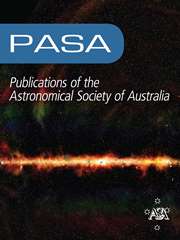Article contents
Strategy for mitigation of systematics for EoR experiments with the Murchison Widefield Array
Published online by Cambridge University Press: 04 December 2024
Abstract
Observations of the 21 cm signal face significant challenges due to bright astrophysical foregrounds that are several orders of magnitude higher than the brightness of the hydrogen line, along with various systematics. Successful 21 cm experiments require accurate calibration and foreground mitigation. Errors introduced during the calibration process such as systematics can disrupt the intrinsic frequency smoothness of the foregrounds, leading to power leakage into the Epoch of Reionisation window. Therefore, it is essential to develop strategies to effectively address these challenges. In this work, we adopt a stringent approach to identify and address suspected systematics, including malfunctioning antennas, frequency channels corrupted by radio frequency interference, and other dominant effects. We implement a statistical framework that utilises various data products from the data processing pipeline to derive specific criteria and filters. These criteria and filters are applied at intermediate stages to mitigate systematic propagation from the early stages of data processing. Our analysis focuses on observations from the Murchison Widefield Array Phase I configuration. Out of the observations processed by the pipeline, our approach selects 18%, totalling 58 h, that exhibit fewer systematic effects. The successful selection of observations with reduced systematic dominance enhances our confidence in achieving 21 cm measurements.
Information
- Type
- Research Article
- Information
- Copyright
- © The Author(s), 2024. Published by Cambridge University Press on behalf of Astronomical Society of Australia
References
- 3
- Cited by


